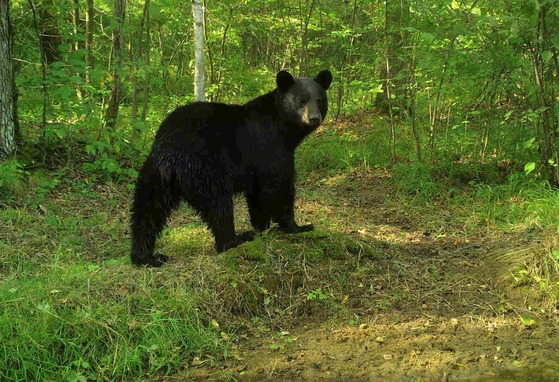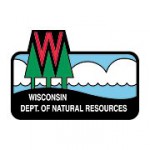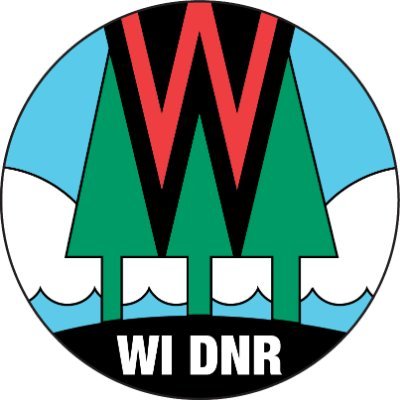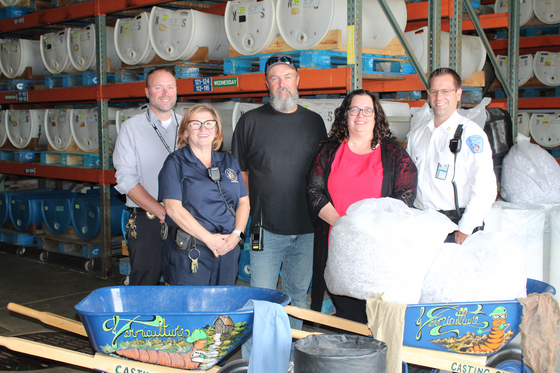2024 Bear Season Results Show Rebound In Harvest And Hunter Success

Wisconsin bear hunters experienced above-average success in 2024, harvesting 4,285 bears during the black bear season. / Photo Credit: Wisconsin DNR
MADISON, Wis. – The Wisconsin Department of Natural Resources (DNR) today announced preliminary results for the 2024 bear season. This fall, bear hunters harvested 4,285 bears during the five-week season, a rebound from the below-average harvest of 2,922 bears taken during last fall’s bear season.
The 2024 bear season ran from Sept. 4 to Oct. 8. A total of 11,501 bear hunting licenses were awarded to hunters through the license lottery system.
Although the number of licenses was reduced slightly this year, hunter success rates were generally higher than expected, leading to meeting or exceeding harvest targets in most management zones. Statewide, hunter success was about 37%, up from the five-year average of 31%. Hunter success rates in individual zones varied from a high of 71% in Zone A to less than 10% in Zones E and F.
“On average, we expect to see about half of the total bear harvest within the first five days of the season,” Johnson said. “This year, nearly 57% of the total harvest occurred in those first five days, with over 1,000 bears taken on opening day alone. Although the harvest rate returned closer to average during the rest of the season, this strong first week set the stage to meet or exceed harvest targets by season’s end.”
Zone-specific preliminary registration information is as follows:
| Zone | Harvest Target | Preliminary Harvest | Licenses Issued | Hunter Success Rate |
| A | 1,075 | 1,237 | 1,731 | 71.5% |
| B | 850 | 898 | 1,515 | 59.3% |
| C | 600 | 796 | 3,000 | 26.5% |
| D | 1,100 | 1,177 | 3,005 | 39.2% |
| E | 175 | 145 | 1,750 | 8.3% |
| F | 50 | 32 | 500 | 6.4% |
| Statewide Total | 3,850 | 4,285 | 11,501 | 37.3% |
| *These preliminary data do not include bears taken via agriculture damage tags (51 bears), the Learn to Hunt program (48 bears) or tribal harvest (n/a). | ||||
Harvest targets are set to manage the bear population in Wisconsin and are readjusted each year to increase, decrease or stabilize population trends. This means that even when harvest targets are exceeded in a given year, there is little long-term biological risk to bear populations. Population and harvest data are evaluated annually and can be adjusted to meet long-term population management objectives.
Benefits Of Bear Hunting
Wisconsin has a thriving bear population, estimated at around 23,000 bears, with a range covering more than half the state. While bears have tremendous cultural and ecological value, they can also conflict with human interests, such as damaging agricultural crops or raiding residential trash and bird feeders.
Hunters provide critical data from every harvested bear, which informs population monitoring efforts to ensure a healthy and sustainable bear population. Bear hunter license fees also supply key funding for bear management and research activities.
Reminders For Next Year
Hunters wishing to obtain a license or preference point for the 2025 season must apply in Go Wild before the Dec. 10 deadline. State law requires bear permit applicants to apply at least once during any period of three consecutive years to retain their accumulated preference points; otherwise, all accumulated preference points will be lost.
Nearly 135,000 people applied for a bear hunting license or preference point for the 2024 season. To help hunters make hunting plans, a full breakdown of the 2024 bear license drawing results and license wait times is available online.
Visit the DNR’s Bear Hunting webpage to learn more about black bear hunting, ecology and management in Wisconsin.
NOTE: This press release was submitted to Urban Milwaukee and was not written by an Urban Milwaukee writer. While it is believed to be reliable, Urban Milwaukee does not guarantee its accuracy or completeness.
























